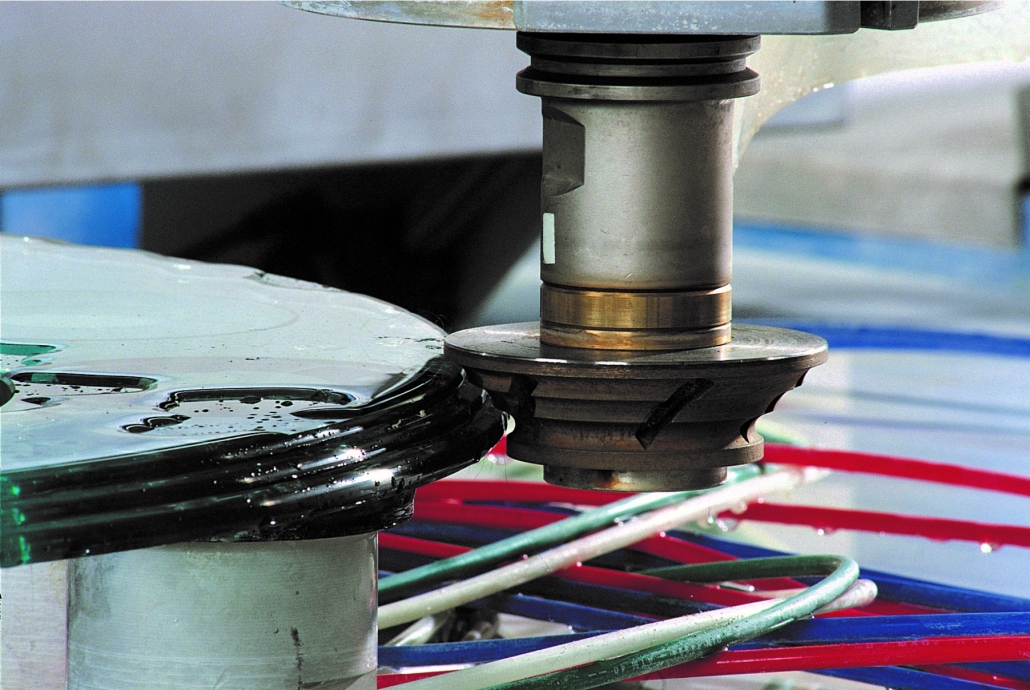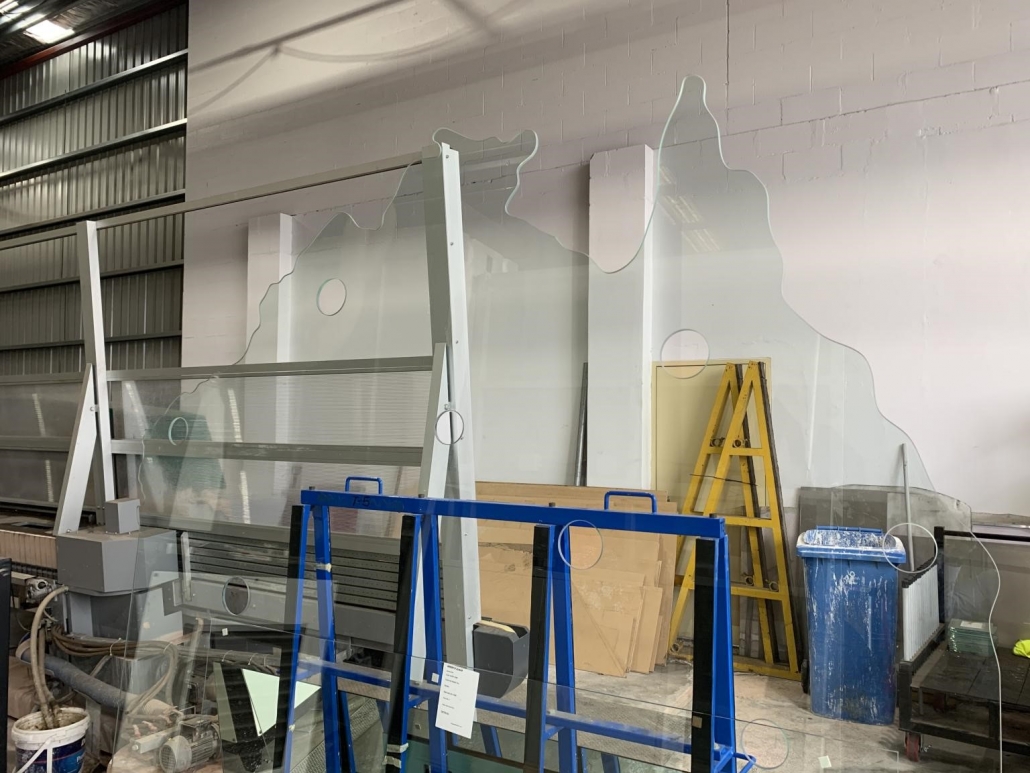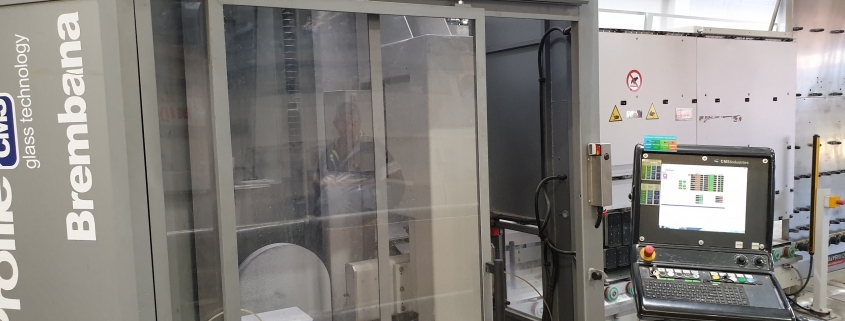If you want to up your game and work your product smarter, not harder, then this guide is just the thing for you. Outlining the three most important factors to glass polishing, it’s the difference between plain polished glass and a brilliant gleam. Read through it carefully – it might just give you the missing key to unlocking a glass gold standard in your space.
1. Vibration is your worst enemy
Glass is a sensitive material. It’s brittle, it’s rigid, and it can only take so much. Every time you introduce it to a machine, you’re inviting vibration into the picture.
Whether you’re using older machines or more advanced technology, the motor and cutting process will make an impression. The amount of influence it has on your edges is the difference between top-quality products, and low-grade dullness.
Edge quality, along with light absorption vs reflection, depend entirely on your machine
. As you work on surfaces, the motor brings about roughness that may not be visible to the naked eye. The larger the unevenness, the more time it takes to grind to perfection – and the harder it is to reach brilliance.
To offset this, innovations in glass machinery are leaping forward in quality. Like our client Gerry’s Glass discovered when our Vertical Profile glass machine was installed in his factory, reducing torque is a big benefit for large glass pieces. In this particular machine, gravity plays a part in offsetting some of the detrimental forces as the CNC cuts pieces with better stability, and less jarring. This puts it in a unique position, beyond the scope of horizontal cutting machines that achieve minimal micromovements through high-tech sensor feedback and damping.
The grip
One of the biggest factors here is how rigidly your machine holds each piece. There’s a delicate balance between securely holding glass, and putting it under such pressure that it shatters. Some high-tech machines have damping and sensor-informed calibration that help avoid such accidents. They take into account a variety of factors that make each motion smooth and rigid. The end result is pieces that come out the other end with the best surfaces primed for a gleaming polish.

2. Be grit smart
If you’ve got the cutting down pat, your next challenge is selecting the right grinding grit.
If you find yourself grinding for hours, you likely haven’t got it right. In fact, you’re probably creating problems rather than smoothing them. To avoid scratching your freshly cut piece
further, start with a grit that’s as close to the grain as you can make it, then work your way up. It shouldn’t take you long to smooth out any sharp, uneven surfaces and prepare for the next phase.
The polish
By the time you reach the polishing wheel, you should have a relatively sleek surface to work on. From there, it’s your chance to make glass shine.
Investing in high quality peripheral wheels is paramount here. Like we outlined above, grit is a major factor in the quality of your final polish, and it pays to get it right the first time. Professional wheels like those in our Tyrolit range come armed with diamond particles to grind down microscopic imperfections. These are the best picks for excellent results; not only because they get glass glossy, but also because they don’t take away too much product, so precise measurements stay put.
You’ll want to watch out for the rate at which you feed your piece into the polishing wheel. The faster it goes, the bigger the mess as we all know. To avoid an imperfect polish, make sure to feed your piece in at a slower rate than that of your wheel.
Aside from getting a finer polish, you’ll also minimise the risk of causing damage through vibration. Just like when cutting, the motor creates motion that translates into bounce as the polishing wheel and glass collide.

3. Water your work well
The final and perhaps most important thing to consider is water. Have enough of it flowing particle-free, and your piece will stay cool and sharp. Leave your work thirsty, and it’ll come out looking dry, dull, and potentially full of detects.
Water quality, especially for glasswork, is extremely important. Silica dust will emerge as a byproduct of the cutting process, and you’ll want that whisked away as soon as possible. Other than potentially marring your piece, it poses an irreversible health risk to your employees. Without water, the silica dust can settle in their lungs, forming silicosis, for which no cure has been found.
It’s imperative that you have the right water flow and tools to keep both work and workers in excellent condition. We recommend that our clients pair their machines with a clarification system like the ITALMECC Blucomb Lamellar Clarification Packs, which have a huge flow rate, and filter out particles as they arrive. Not only is this particular system a high-quality design – used even for the medical industry – but it’s also a major cost-saver.
The cleverly engineered system channels the filtered water right back to the workspace thanks to its closed-loop design. This means no clean tap water is necessary, lowering cost of utilities, and reducing environmental impact in addition. Efficiency can be amplified through the ITALMECC’s automatic ejection of sludge as dehydrated bricks, along with a feature to automatically inject flocculants into the system if desired.

Gear up for your glass potential
Taking these three important factors into account will boost your glass working processes to their highest potential. Done right, you can achieve incredibly brilliant, glossy glass that rises far beyond the norm. Gerry, our glass client, knows this well, and is ever grateful for the revolutionary technology that we’ve applied to his business, helping it flourish long into the future.
We’re glad to apply our trademark service excellence and aid manufacturers to get the very best out of their product. If you’re curious to hear what we can do for you, don’t hesitate to reach out and get in touch with our technical team today.
We look forward to hearing about your glass journey, and any thoughts you have on our guide! Share them with us via our social media channels, and showcase your skills in the field. We’d love to see what comes of the collaboration, and where it leads the glass industry in the coming decades.



